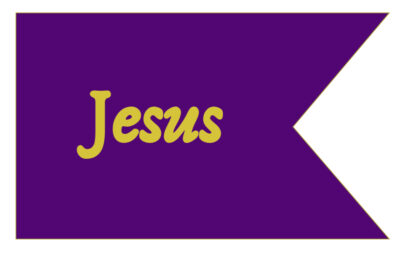Author Gary Chapman famously wrote a book titled The Five Love Languages. In his book, he describes 5 primary ways everybody gives and senses love. His premise is that everyone speaks at least one of those languages; some are multi-lingual. One of the ways people express love is through giving gifts. We demonstrate our love by carefully and thoughtfully choosing what we think is the perfect gift. We feel love when the giver has paid attention and given us exactly what we wanted or needed.
I am sixty years old, and I still get a thrill out of opening presents on Christmas morning. I love the surprises in the boxes with my names. But I love even more to see the joy on my family’s faces when they open theirs. I hope when they open gifts from me, they sense the love I wrapped up in the box with the gift.
The theme of Advent this week is LOVE. We take time to reflect on the greatest demonstration of love ever experienced. Consider this truth from God’s Word:
But God shows His love for us in that while we were still sinners, Christ died for us. – Romans 5:8
Love Past
Advent reminds us that God showed how deep His love was for us by sending Jesus to die for us even while we were still sinners unworthy of saving. As you worship this Christmas, bask in the reality of God’s faithful, never-ending, unconditional love for you. Undeserved, yet lavishly given in His Son Jesus.
One of the most well-known Bible verses is John 3:16.
For God so loved the world that He gave His only begotten Son, that whoever believes in Him would not perish, but have eternal life.
If we are ever tempted to doubt that God loves us, all we need to do is look to the Cross. God invested the life of His Son to redeem us. That must mean we are deeply loved.
Love Present
God not only loved us, He also loves us. Present tense. Today.
31 What then shall we say to these things? If God is for us, who can be against us? 32 He who did not spare His own Son but gave Him up for us all, how will He not also with Him graciously give us all things?
38 For I am sure that neither death nor life, nor angels nor rulers, nor things present nor things to come, nor powers, 39 nor height nor depth, nor anything else in all creation, will be able to separate us from the love of God in Christ Jesus our Lord. – Romans 8:31-32; 38-39
We are inseparable from God’s love. Nothing can come between us and Him. Because God is good, and because He loves us, we can trust that He will give us everything that is good for us. And the love He has for us shows itself in the way He sovereignly arranges the events of our lives.
And we know for those who love God, all things work together for good; for those who are called according to His purpose. – Romans 8:28
Love Future
Advent also reminds us that Jesus not only came once to redeem. He is coming again to bring us into His presence for eternity. Just as His people expectantly waiting for His coming then, we also now expectantly await His second coming. Then, we will be with Him forever. And He will complete His work of salvation in us.
1 See what kind of love the Father has given to us, that we should be called children of God; and so we are. The reason why the world does not know us is that it did not know Him. 2 Beloved, we are God’s children now, and what we will be has not yet appeared; but we know that when He appears we shall be like Him, because we shall see Him as He is. 3 And everyone who thus hopes in Him purifies himself as He is pure. – 1 John 3:1-3
This week’s Advent Prayer
Heavenly Father,
You demonstrated your love for us in a way we could never have imagined. You sent Your Son, Jesus to die for our sins.
And Your love continues even to this day through the presence of Your Holy Spirit in our lives. Forgive us for allowing competing loves in our life. Help us to love you faithfully and fully. Knowing all the while that no matter how our love for You may fluctuate from day to day, Your love for us never fades.
Help us to long for Jesus’ return when we will be united with the Lover of Our Soul and live with You forever in Heaven.
In Jesus’ name. Amen.
Click here to view this year’s Advent Sermon on Love
 A friend messaged me a question the other day that set me to thinking: “Why don’t Baptists celebrate Lent in some form?” So here are a few of the reasons I and giving up Lent for Lent.
A friend messaged me a question the other day that set me to thinking: “Why don’t Baptists celebrate Lent in some form?” So here are a few of the reasons I and giving up Lent for Lent.








